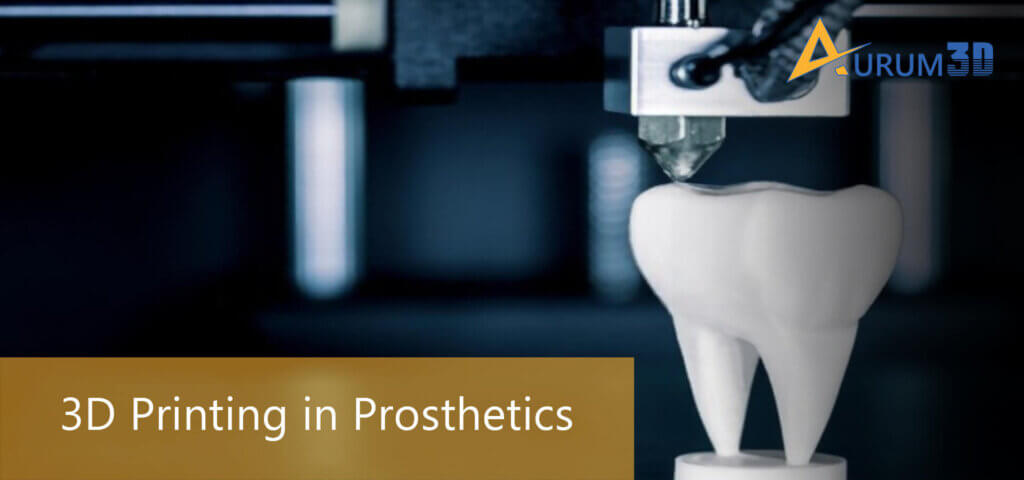As an artificial device, prosthetics enable people with disabilities to perform daily activities on their own by replacing their missing body parts with artificial body parts. Prosthetists treat people with disabilities by implanting a variety of prosthetics surgically. While fitting artificial body parts, healthcare professionals have to focus on a slew of factors – materials, design, alignment, and construction – to meet the precise functional needs of the individual.
Prosthetists always leverage cutting-edge technologies to reduce the time and efforts required to build custom prostheses. Hence, the technological trends in prosthesis designing and development change from time to time. At present, medical-grade 3D printing is one of the hottest trends in prosthetic technology. In addition to accelerating the development of personalized prostheses, 3D printing technologies make prosthetic implants affordable for many persons with disabilities.
According to a market analysis report released by The Business Research Company,
“The global 3D printed medical prosthetics market is expected decline from $0.07 billion in 2019 and to $0.064 billion in 2020 at a compound annual growth rate (CAGR) of -8.26%. The decline is mainly due to economic slowdown across countries owing to the COVID-19 outbreak and the measures to contain it. The market is then expected to recover and reach $0.095 billion in 2023 at CAGR of 13.81%.”
Use Cases Depicting the Growing Significance of 3D Printing in Prosthetics
Making Prosthetic Implants Affordable
According to the Alliance of Advanced Biomedical Engineering (AABME),
“Advanced prosthetic limbs can cost anywhere from $5,000 to $50,000. This is a high price even in industrialized countries, and is well beyond the means of many amputees in poor, developing nations where war and disease often take a greater toll.”
The 3D printing technologies enable companies to program. Also, the companies can deliver personalized prostheses on demand while reducing the overall cost of production. Hence, the amputees can get 3D-printed artificial body parts at much lower costs.
Delivering Prostheses in Hours
The enterprises using conventional manufacturing techniques deliver custom prostheses in several days. They have to spend time on customization and finetuning the design of the artificial body part to meet precise functional needs. But medical 3D printing technologies enable enterprises to produce and deliver custom prostheses in several hours.
The bioengineers can easily evaluate and finetune the design of the prostheses using the digital file. Also, they can impress the customers by allowing them to choose their preferred colors and styles. At the same time, the bioengineers can use the right 3D printer and materials to deliver the personalized prosthesis in a single day.
Enhancing Strength and Durability
The durability of prostheses varies based on the amputee’s age, growth, and activity level. But most prostheses last for several years. Bioengineers use plastic to produce both conventional prostheses and 3D-printed prostheses. But 3D printing technologies enable them to produce stronger prostheses using materials like bridge nylon.
Also, bioengineers can make the prostheses last longer using materials like lightweight titanium. Many companies have used 3D printers to produce stronger and more durable prostheses by using fresh material compositions. Also, bioengineers improve the quality of prostheses consistently by experimenting with new 3D printing materials.
Mimicking Natural and Original Organs
The conventional manufacturing techniques do not allow bioengineers to produce artificial body parts that mimic the natural organs exactly. But the 3D-printed prostheses can be customized to mimic the organs accurately. A leading prosthetic company has already leveraged medical 3D printing to produce an artificial finger that mimics the extension and flex of the natural finger.
The 3D printing technologies facilitate the low-volume production of highly personalized prostheses. Hence, they can finetune individual prostheses to provide the amputee with strength, flexibility, and convention. Also, they can optimize the design to make the prosthesis effective in keeping the amputee safe by preventing injuries in the future.
Creating Human-Machine Interfaces
Many bioengineers have been conducting research to create human-machine interfaces by integrating new-generation technologies like artificial intelligence (AI), machine learning (ML), and 3D printing. The human-machine interfaces facilitate the creation of prostheses that appear just like an extension of the body naturally.
Also, the artificial body parts will experience sensation and reflexes just like human body parts. The medical 3D printing technologies make it easier for bioengineers to evaluate and finetune the human-machine interfaces frequently without increasing material consumption and wastage.
Allowing Amputees to 3D-Print New Prostheses
The prostheses can withstand wear and tear successfully only for three to five years. The amputees need to replace the artificial body part at the right time to perform daily activities smoothly. Many amputees do not replace prostheses in time to save money. Many enterprises these days help amputees to save time and money by 3D-printing custom prostheses on their own.
The amputees can get prostheses 3D-printed using a digital file prepared by a training prosthetic. Also, they can design the prosthesis using many open-source designing tools and produce the artificial body part by availing professional 3D printing services. The options to create and customize will help millions of amputees to get the prosthetic implant and replace prostheses without any delay.
Overcoming Shortage of Trained Prosthetists
According to TheGuardian.com,
“Prosthetics can involve a lot of work and expertise to produce and fit. The WHO says there is currently a shortage of 40,000 qualified prosthetists in poorer countries.”
The enterprises in both developed and developing countries can leverage medical 3D printing technologies to overcome the shortage of trained prosthetists.
They can enhance the productivity of the trained prosthetists by making them focus only on designing and finetuning the design of the prosthesis in digital format. The digital file approved by the prosthetic can be used by the engineers to 3D-print the prostheses rapidly and accurately. Hence, the producers can deliver many personalized prostheses regularly by leveraging 3D printing technologies.
The steady growth of the global 3D printed medical prosthetics market depicts the growing significance of 3D printing in prosthetics. The prosthetists across the world leverage medical-grade 3D printing to produce personalized prostheses on demand. Also, people with disabilities can get prosthetic implants without incurring huge expenses by opting for 3D printed medical prosthetics.

